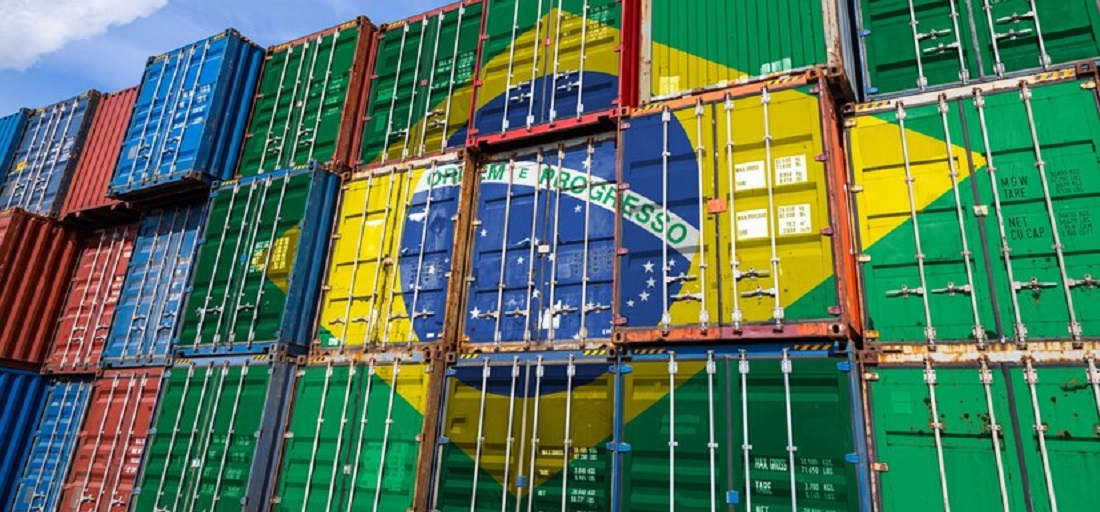
Brazil: DataLiner data indicate 7.1% surge in container imports from January to August
Oct, 02, 2023 Posted by Gabriel MalheirosWeek 202339
Data recently released by Datamar’s Business Intelligence team regarding Brazil’s container throughput indicate that, in the first eight months of the year, there was a 7.1% surge in imports compared to the same period in 2022. In total, Brazil brought in 1,757,910 TEUs from abroad in 2023 compared to 1,641,386 TEUs in 2022.
Among the top imports are plastics (+23.1%), reactors, boilers, and machinery (+19.3%), and electrical material devices (+26.6%). Additionally, Datamar’s data show increased imports of steel products (+18.8%) and glass (+23.3%), among others. (Period from January to August 2023 compared to January to August 2022)
Imports of these products indicate that the Brazilian economy is accelerating, as these goods tend to be directly associated with increased consumption of construction goods and raw materials for industry.
Another factor contributing to the increase in imports was the lower exchange rate in 2023 compared to the previous year.
The graph below illustrates the growth of Brazilian container imports in the first eight months of 2023 compared to the same period in 2022. The data was compiled by Datamar’s Business Intelligence team:
Containerized imports | Jan-Aug 2023 to Jan-Aug 2022 | TEU
Source: DataLiner (click here to request a demo)
Exports
In contrast to imports, Brazilian container exports have recorded a 3.4% decrease in the first eight months of the year compared to the same period from January to August 2022. There were 1,786,375 TEUs exported during this period, compared to 1,848,435 TEUs over the same period in 2022. Despite this, the volumes for August 2023 exceed those of August 2022.
Meat remains the most exported commodity via containers from Brazil in 2023, up 3.6% higher in the first eight months of the year compared to January to August 2022. Wood, the second most exported cargo by Brazil during this period, saw a 14.6% contraction, according to Datamar.
Among the main destinations for Brazilian cargoes are China (+6.3% in the period from January to August 2023 compared to the same months in 2022) and the United States (-15.8% in the same comparison). Exports to Argentina fell by 28.9% during the period.
Check below a chart comparing Brazilian containerized exports according to data provided by Datamar.
Containerized exports | Jan-Aug 2023 to Jan-Aug 2022 | TEU
Source: DataLiner (click here to request a demo)
Plate
Regarding Argentina, DataLiner’s data indicate a decrease in both exports (-7.3%) and imports (-9.9%) from January-August 2023 to the corresponding period last year.
On the other hand, Uruguay recorded a 7.8% decrease in exports from January to August 2023 compared to the same period in 2022 and a slight increase (+1.9%) in imports in the same comparison.
Stable Freight Rates
Given this scenario, a report prepared by Platts, part of the S&P Global Group and released on Monday, October 2, points out that container rates in Latin America showed slight variation during the week ending September 29. “Rolled cargoes” and blank sailings prevented potential rate reductions due to the oversupply of vessels.
Ex-Asia shipments to the East Coast of South America fell $50 in the last week to $1,600/FEU, maintaining a small premium of $100 compared to rates assessed by Platts for container imports on the West Coast.
Rates in the North-South trade between the East Coast of South America and the US Gulf Coast remained stable at $1,730/FEU for ECSA exports and $900/FEU for USGC exports.
Outlook
For the last quarter of the year, the outlook is positive. The Institute of Applied Economic Research (Ipea) released, last Friday (September 29), an overview of the economic situation in Brazil, providing a thorough analysis of the performance of the Brazilian economy in the third quarter of 2023. The institution revised Brazil’s Gross Domestic Product (GDP) projection from 2.3%, as previously published, to 3.3% in 2023. The forecast for 2024 remains at 2.0%.
According to the organization, on the international front, in addition to China’s economic reopening in the first half of 2023, the US economy has shown dynamism, defying traditional leading recession indicators. The second relevant aspect is the increased market share of Brazilian producers in the international trade of soybeans and oil, previously supplied by other competitors. This gain of new markets results in the growth rate of Brazilian exports being higher than in international trade.
Furthermore, the stagnation of productive investments is expected to be overcome with the measures announced by the federal government through the new Growth Acceleration Program (PAC), currently in effect. The new PAC was announced with estimates of R$1.7 trillion in investments to be made over the next four years.
-
Ports and Terminals
Sep, 08, 2023
0
Public call fails to attract new proposals to Brazil’s port project in Arroio do Sal
-
Ports and Terminals
May, 21, 2021
0
Portonave leads container handling in the South in the 1st quarter
-
Ports and Terminals
Feb, 23, 2023
0
Itapoá port to employ remotely controlled cranes
-
Other Logistics
Nov, 22, 2022
0
project44: blank sailings rise as new threat to global container transport


